#capri
Buy/Drive/Burn: Mid-seventies Captive Imports
Today’s Seventies captive imports trio comes to us via suggestion by commenter MRF 95 T-Bird. He wants to see which of the Manta, Capri, and Arrow warrants a malaise era Buy. We’ll straddle two model years today, 1975 and 1976.
Rare Rides Icons: The Ford Capri, a European Mustang (Part III)
Today we conclude the Ford Capri’s story with its third and final generation. After the Mark I’s promising start as a simple and affordable sporty coupe, the Mark II went a bit too soft and comfortable and diverged into many different trims as Ford tried to appeal to a wider audience.
“We can fix it!” exclaimed Ford. Time for Capri Mark III.
Rare Rides Icons: The Ford Capri, a European Mustang (Part II)
We continue our series on the sporty European market Ford Capri today. Introduced in 1969 as a pony car to suit customers outside of North America, Capri proved an immediate success across Europe and found a more limited customer base in North America too. By the mid-Seventies, times had changed and it was time for a new Capri, the Mark II.
Rare Rides Icons: The Ford Capri, a European Mustang (Part I)
Across two generations and nearly two decades of production, the Ford Capri existed as the European market alternative to the very America-centric Mustang. Basic or more luxurious, thrifty or more powerful, Capri played an important role in its day: It brought a practical, fun driving experience within reach of the average European family consumer.
Rare Rides: The 1994 Mercury Capri - Miata's Serious Competitor
The Rare Rides series has featured two Capri-adjacent vehicles in past: This car’s immediate predecessor, the ASC McLaren Capri, and its contemporary competitor, the Lotus Elan. Let’s find out how much better the final Capri was than either of those two (or not).
Junkyard Find: 1980 Mercury Capri
Vellum Venom: Uwe Bahnsen, Car Designer, RIP
Never forget: people make all the difference. This often overlooked fact in the glamorous world of automotive styling rings true for the life of Mr. Uwe Bahnsen. I froze in my tracks when I heard of his passing on Car Design News. His work at Ford and with the Industrial Design community influenced me, and every American who loved cars in the 1980s.
How ironic that Mr. Bahnsen’s passing was the week TTAC’s own Ford Sierra passed its citizenship test in Texas: so here’s a great Germanic-Texas Beer for you, Mr. Bahnsen.
Junkyard Find: 1993 Mercury Capri
After the Miata (introduced in the United States as a 1990 model) turned out to be an instant hit for Mazda, the marketing wizards at Ford decided to put Mercury badges on the Australian Ford Capri, a four-seat sporty convertible, and beat Mazda at its own game. Sure, the ’91-94 Capri was a Mazda under the skin (it was based on the 323), and it had front-wheel-drive, but so what?
Junkyard Find: 1980 Mercury Capri
The Fox Platform was one of Ford’s biggest postwar success stories; a (relatively) modern, (sort of) lightweight unibody design that could be used for everything from economy commuters to rubber-burning factory hot rods to plush luxury sedans. Sure, Ford kept the Fox on life-support a few years too many, but that’s how they roll in Detroit. We often forget about the Fox Capri, since it looked even nearly identical to its Mustang sibling (and because everyone thinks of the earlier Euro-Ford-based Capri when they hear the name), so it took me a second to realize that this inhabitant of a Northern California self-service yard wasn’t a Mustang.
Curbside Classic: Ford's Deadly Sin#1 – 1975 Mustang Cobra II
Powered By Ford. There’s something special about those words, something iconic, something that evokes nightmares of an uniquely American scope, from our first family cross-country trips in a 1954 Ford that perpetually overheated and stalled from vapor lock (when it actually started) to the last one, Mother’s craptastic 1981 Escort (replaced by a Civic) that could barely do seventy wheezing unsteadily along the rain-soaked I-70 straight. Powered by Ford. It’s the peeling logo hastily slapped onto the valve covers of this five-liter Mustang II, but you won’t need to raise the hood to understand what it means. The first time this pathetic lump of an engine tries to suck air through its tiny two-barrel carburetor and wheezes its feeble exhaust through soda-straw sized tailpipes, it will be more than crystal clear.




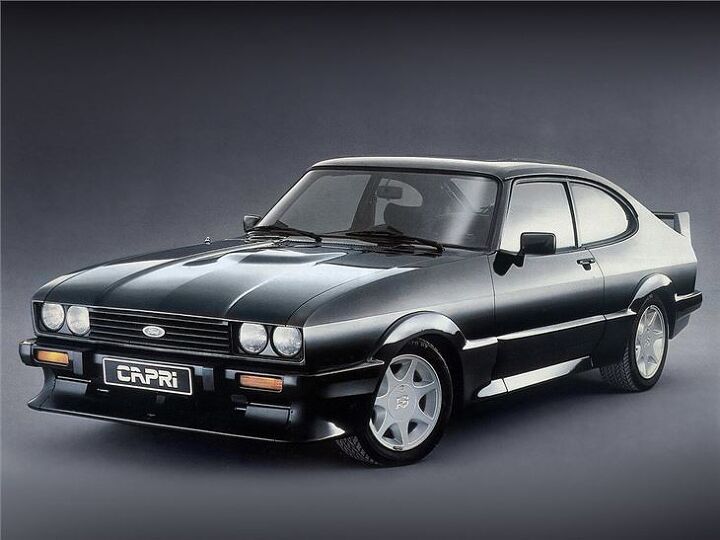


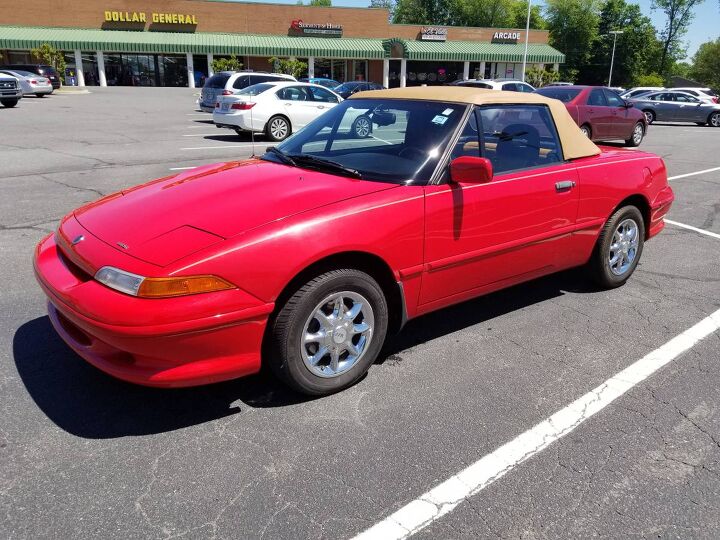
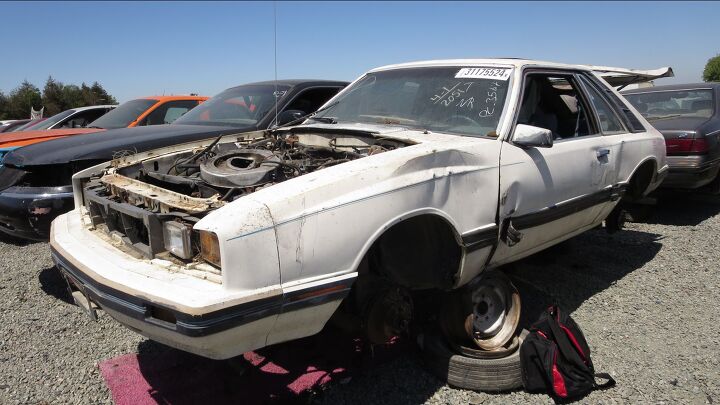
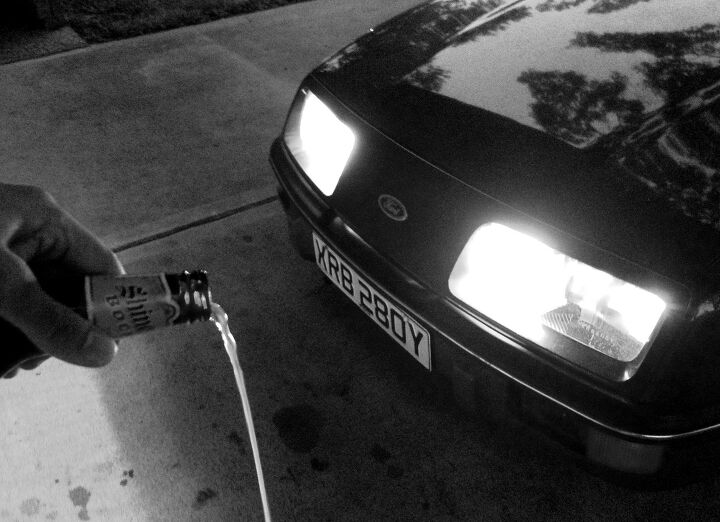
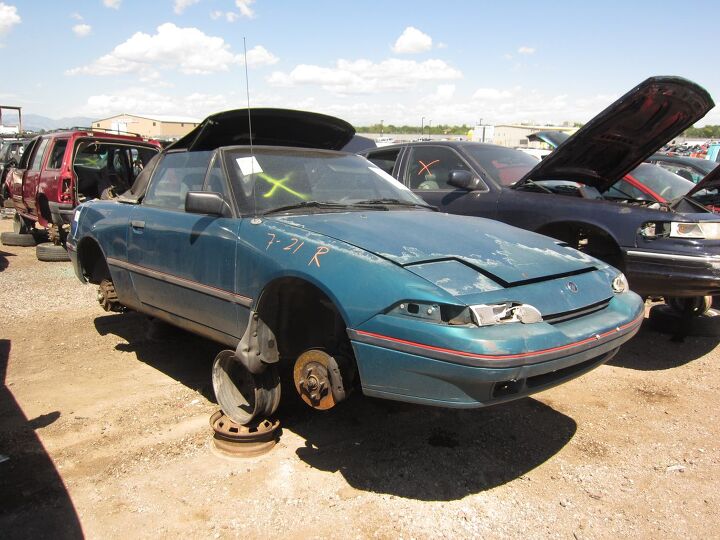

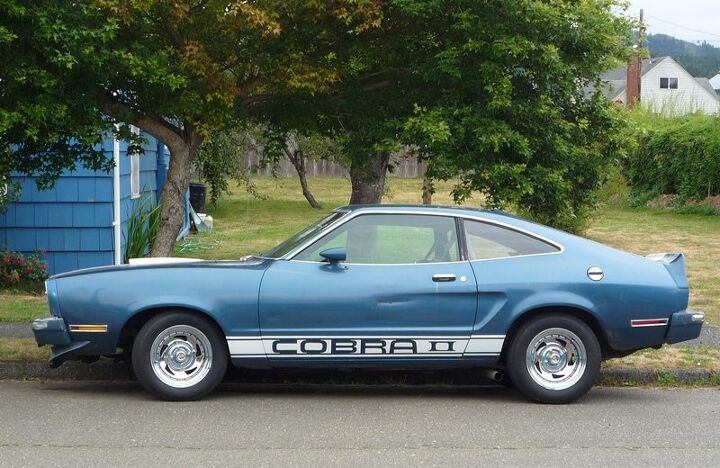












Recent Comments